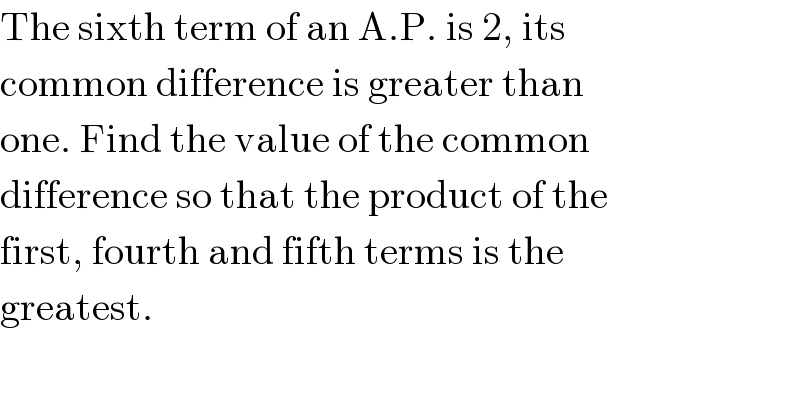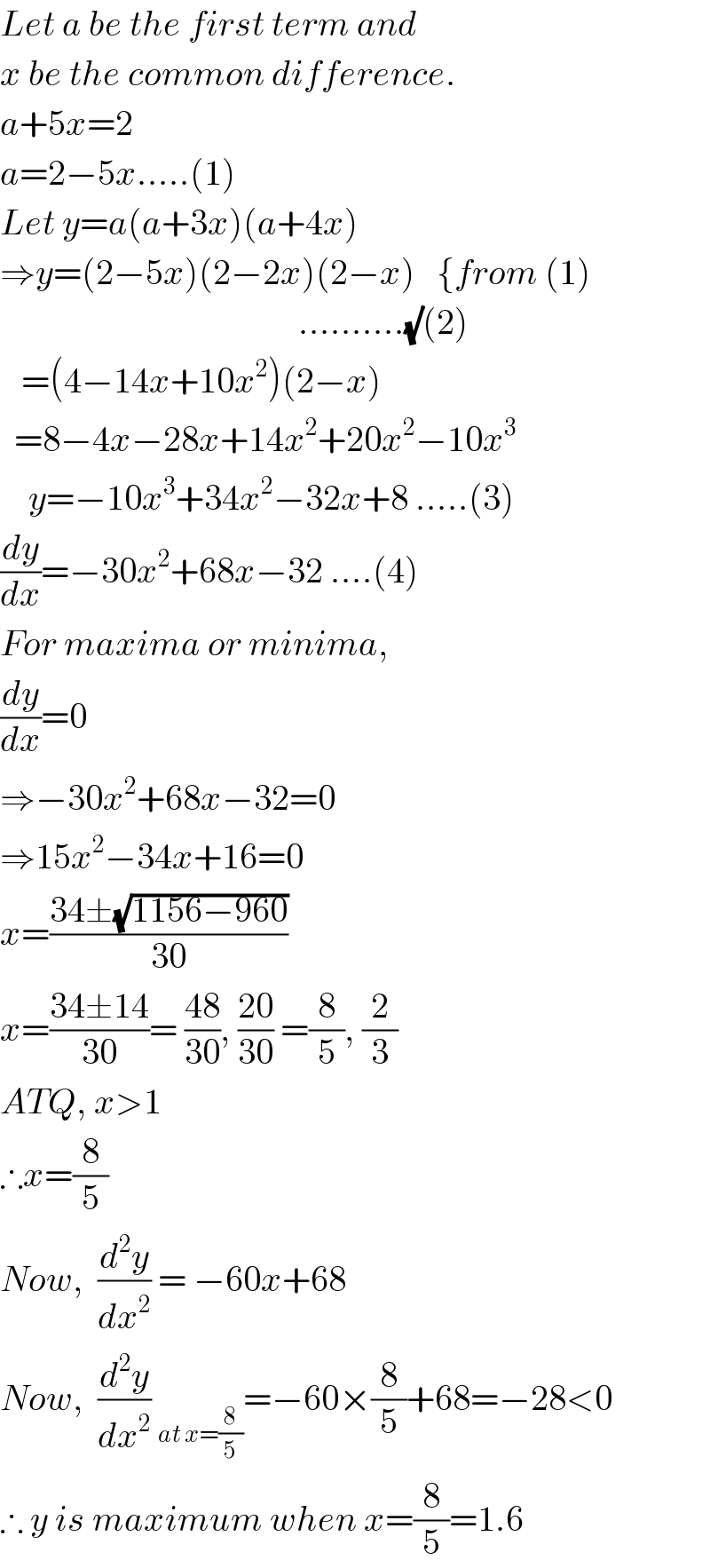The-sixth-term-of-an-A-P-is-2-its-common-difference-is-greater-than-one-Find-the-value-of-the-common-difference-so-that-the-product-of-the-first-fourth-and-fifth-terms-is-the-greatest-
Question Number 108854 by ZiYangLee last updated on 19/Aug/20
Answered by $@y@m last updated on 20/Aug/20



